In a world where pet nutrition is gaining increasing attention, the term “human-grade” has become a hallmark of quality for many pet owners. It represents a commitment to providing pets with the same level of nutrition and care that we afford ourselves. While there’s an abundance of commercially available cat foods, many pet owners are opting to create homemade meals for their feline companions. In this blog, we’ll explore the concept of human-grade cat food and share some delectable recipes that your furry friend will love Human-grade cat food recipes are specially crafted meals that use ingredients that are safe & healthy for both humans & felines. These recipes eliminate The use of artificial flavors. Colors & preservatives commonly found in commercial cat foods. By incorporating high-quality proteins. Vegetables & grains. These recipes provide a balanced diet for cats. Promoting their overall wellbeing & reducing The risk of health issues. Not only are human-grade cat food recipes nutritious,. But they also allow pet owners To have peace of mind knowing exactly what goes into their feline’s meals. Human-grade cat food recipes. Discover easy & healthy human-grade cat food recipes that your feline friend will adore. Say goodbye To complicated ingredients & hello To homemade goodness for your beloved kitty.
Benefits of Feeding Your Cat Human-Grade Food
I want To share my personal experience with feeding my cat human-grade food. As a cat owner. I am always concerned about providing The best nutrition for my feline friend. When I discovered the benefits of feeding cats human-grade food,. I decided To switch To homemade cat food recipes. It has been a gamechanger for both my cat’s health & overall wellbeing.
Feeding your cat human-grade food offers numerous advantages. Firstly. It ensures that your cat is consuming high-quality ingredients that are safe for human consumption. This means that The food is free from harmful additives. Preservatives & fillers are commonly found in commercial cat food. By avoiding these ingredients. You can reduce The risk of allergies & other health issues in your cat.
Additionally. Homemade cat food allows you To have complete control over your cat’s diet. You can choose specific ingredients based on your cat’s dietary needs. Preferences & any health concerns they may have. This level of customization is crucial for cats with allergies. Sensitivities. Or medical conditions that require a specific diet.
Important Nutrients for Cats
When preparing human-grade cat food,. It’s essential To ensure that your recipes contain all The vital nutrients that cats need. Some key nutrients to include in your homemade cat food recipes are:.
Taurine
Taurine is an essential amino acid for cats. It plays a crucial role in maintaining healthy heart function. Vision & reproductive health. Make sure to include taurine-rich ingredients like meat or fish in your cat’s diet.
Protein
Cats are obligate carnivores. Which means they require a diet rich in animal protein. Include high-quality protein sources, like chicken. Turkey. Or beef To meet your cat’s protein needs.
Omega-3 Fatty Acids
Omega-3 fatty acids are beneficial for your cat’s skin. Coat, & overall immune system. Fish oil or flaxseed oil are excellent sources of omega-3 fatty acids. Adding these To your cat’s diet can promote a healthy & shiny coat.
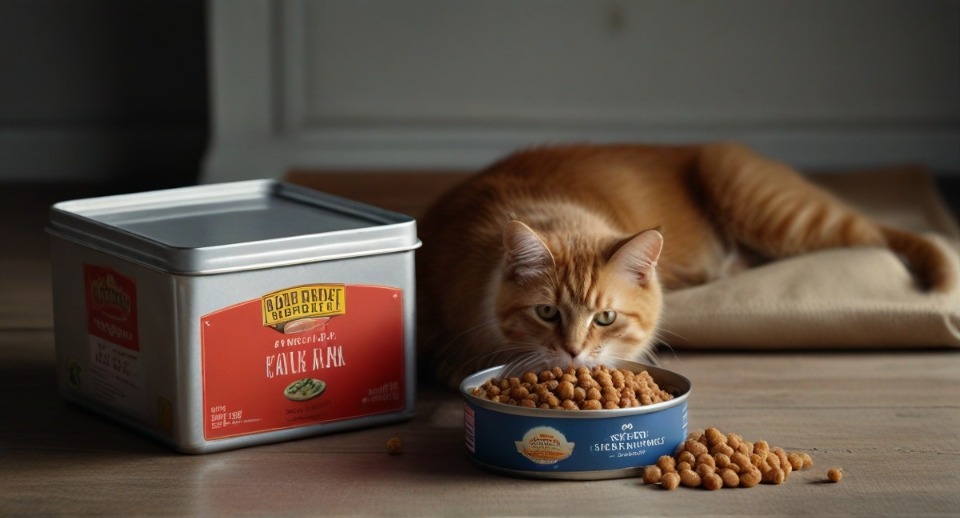
Human-grade cat food recipes
If you’re ready To start preparing homemade cat food for your furry friend,. Here are some recipe ideas To get you started:
1. Chicken & Vegetable Stew
This recipe combines lean chicken. Carrots. Peas & brown rice for a balanced & nutritious meal. It’s packed with protein, essential vitamins & minerals.
2. Fish & Sweet Potato Delight
This recipe features heart-healthy fish like salmon or tuna. Which is rich in omega-3 fatty acids. Sweet potatoes provide a good source of carbohydrates while being gentle on The digestive system.
3. Beef & Pumpkin Casserole
Beef is an excellent source of protein. While pumpkin adds fiber & vitamins To The recipe,. It’s a delicious & hearty meal that your cat will love.
4. Turkey & Quinoa Surprise
Quinoa is a nutritious grain that offers both protein & fiber. Combined with lean turkey. This recipe provides a well-rounded meal for your cat.
5. Salmon & Spinach Delight
Salmon is loaded with omega-3 fatty acids. While spinach adds vitamins & minerals To The recipe,. It’s a flavorful & nutrient-dense meal for your cat.
Preparing Homemade Cat Food
When preparing homemade cat food,. It’s important To follow proper food safety guidelines. Here are some tips To ensure The safety of your cat’s food:
1. Use Fresh Ingredients
Always use fresh ingredients when preparing your cat’s food. Avoid using expired or stale ingredients, as they may cause health issues for your cat.
2. Cook Thoroughly
Cook meat & fish thoroughly To kill any harmful bacteria. Partially cooked or raw meat can pose health risks for your cat. So it’s crucial To ensure they are fully cooked.
3. Store Properly
Store your homemade cat food in airtight containers in The refrigerator To prevent bacterial growth. It’s recommended To only prepare a few days’ worth of food at a time To maintain freshness.

Human-grade cat food recipes
Human-grade cat food recipes represent a profound departure from traditional notions of pet nutrition. They are a testament to the evolving relationship between humans and their animal companions, reflecting a deep-seated commitment to providing the highest quality care and nourishment to our feline friends.
At its core, the concept of human-grade cat food recipes embodies a shift towards holistic and conscientious pet ownership. It signifies a departure from the mass-produced, heavily processed foods that dominate the pet food industry and instead emphasizes the use of fresh, whole ingredients that are fit for human consumption. This approach recognizes that cats, like humans, benefit from a diet rich in nutrients, free from artificial additives, fillers, and preservatives.
Delving deeper, human-grade cat food recipes are a manifestation of the profound bond that exists between humans and their pets. They represent an acknowledgment of the unique role that animals play in our lives as beloved companions and cherished members of the family. By taking the time and effort to prepare homemade meals for our cats, we demonstrate a level of care and devotion that transcends the mere act of feeding. It is an expression of love, nurturance, and respect for the well-being of our furry companions.
Moreover, human-grade cat food recipes embody a profound sense of responsibility towards the welfare of animals. By advocating for higher standards in pet nutrition, we contribute to a larger conversation about ethical sourcing, sustainability, and animal welfare within the food industry. This conscientious approach extends beyond our own pets to encompass broader issues of environmental stewardship and compassion for all living beings.
Human-grade cat food recipes also invite us to reconnect with the natural rhythms of food preparation and consumption. In an era marked by convenience and fast-paced lifestyles, the act of cooking for our pets serves as a grounding practice that fosters mindfulness and connection. It reconnects us to the simple pleasures of selecting fresh ingredients, preparing wholesome meals, and sharing nourishing food with those we love.
In essence, human-grade cat food recipes are more than just a collection of ingredients and instructions—they are a reflection of our values, priorities, and relationships. They represent a commitment to providing the best possible care for our feline companions, a reverence for the interconnectedness of all living beings, and a celebration of the profound bond that unites humans and animals in a shared journey of love and companionship.
The Importance of Feeding Cats Humane Food
Feeding cats with human-grade food is becoming increasingly popular among pet owners. This trend is driven by The desire To provide cats with a nutritious & wholesome diet that mimics what they would eat in The wild. Human-grade cat food recipes are formulated To meet The specific nutritional needs of our feline friends. Ensuring they receive all The essential nutrients in their diet.
When it comes To feeding our cats,. It’s important To remember that they are obligate carnivores. This means that their bodies are designed To digest & utilize animal protein more effectively than plant-based ingredients. While commercial cat foods may contain a blend of meat,. Grains & other ingredients. Human-grade cat food recipes focus primarily on animal-based proteins. Which better meet The nutritional needs of cats.
Click here To find an excellent collection of human-grade cat food recipes To try at home.
Discovering the World of Human-Grade Cat Food
My journey into the world of human-grade cat food recipes began with a desire to ensure that my cats were receiving optimal nutrition. Concerned about the quality of ingredients in commercial cat foods, I sought alternatives that would allow me to have better control over what my furry friends were consuming. That’s when I stumbled upon the concept of human-grade ingredients, and it immediately clicked with me.
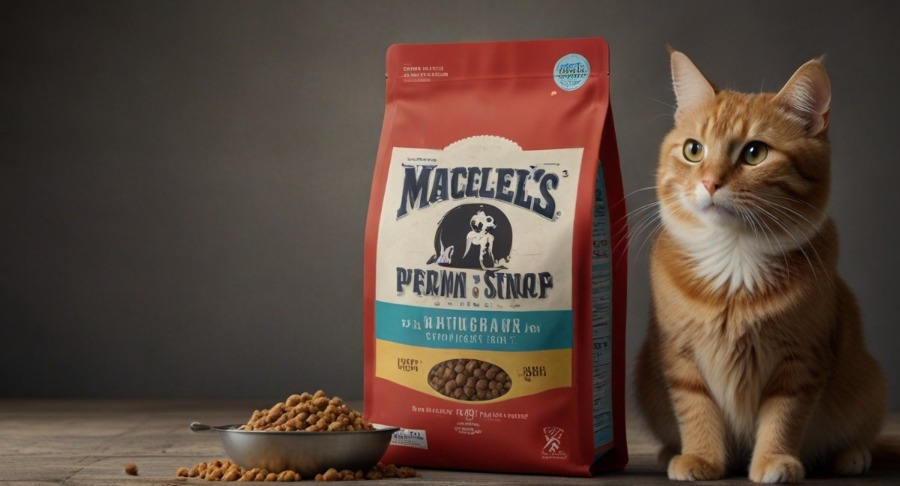
Embarking on Culinary Adventures
Armed with newfound knowledge and enthusiasm, I delved into the realm of homemade cat food recipes. From simple dishes like chicken and rice to more elaborate concoctions featuring salmon and quinoa, I eagerly experimented with different ingredients and flavor combinations. Each recipe was crafted with love and care, with the well-being of my cats at the forefront of my mind.
Bonding Through Cooking
One of the most rewarding aspects of preparing human-grade cat food has been the bond it has strengthened between me and my cats. As I chop vegetables, cook proteins, and mix ingredients together, my feline companions often gather around, curious and eager to lend a paw (or, more accurately, supervise from a safe distance). Sharing these moments in the kitchen has deepened our connection and created cherished memories that I’ll always treasure.
Seeing the Joy in Their Eyes
The true testament to the value of human-grade cat food recipes lies in the joy it bring to my cats. Witnessing their excitement and contentment as they eagerly devour each meal fills my heart with happiness. From the enthusiastic tail wags to the satisfied purrs that follow, it’s clear that these homemade dishes are more than just food—they’re expressions of love and devotion.
Tips for Preparing Human-Grade Cat Food
Preparing human-grade cat food requires attention To detail & careful consideration of your cat’s individual dietary needs. Here are some tips To help you get started:
1. Consult with a veterinarian: Before making any changes To your cat’s diet. It’s essential To consult with a veterinarian. They can provide guidance on The specific dietary requirements of your cat. Taking into account factors such as age. Weight, & any underlying health conditions.
2. Choose high-quality ingredients: When preparing human-grade cat food. opt for high-quality ingredients. This includes lean meats, such as chicken. Turkey & fish. Avoid using ingredients that are toxic To cats. Such as onions. Garlic & certain spices.
3. Balance The nutrients: Cats require a balanced diet that includes proteins. Fats & carbohydrates in The right proportions. Work closely with your veterinarian To ensure The recipes you prepare meet all The necessary nutritional requirements.
Benefits of Human-Grade Cat Food
Feeding your cat with human-grade food offers several benefits. Including:
- Optimal Nutrition: Human-grade cat food recipes provide balanced nutrition, incorporating high-quality ingredients that offer essential vitamins, minerals, and protein for your cat’s overall health and well-being.
- Improved Digestion: With no artificial additives, fillers, or preservatives, human-grade cat food is easier for your cat to digest, reducing the risk of digestive issues such as upset stomachs and food sensitivities.
- Healthier Ingredients: By using fresh, whole ingredients fit for human consumption, human-grade cat food eliminates the need for low-quality by-products and questionable additives often found in commercial pet foods, promoting better long-term health.
- Enhanced Flavor and Palatability: Cats are natural carnivores with discerning palates. Human-grade cat food recipes offer a variety of flavors and textures that cater to your cat’s preferences, making mealtime a delightful experience.
- Customized Nutrition: Homemade human-grade cat food allows you to tailor recipes to your cat’s specific dietary needs, whether they require more protein, fewer carbohydrates, or additional vitamins and minerals, ensuring they receive personalized nutrition.
- Bonding Experience: Cooking for your cat fosters a deeper connection and strengthens the bond between you and your pet. Sharing meals made with love and care creates positive associations and enhances the relationship between you and your furry friend.
- Transparency and Control: By preparing homemade cat food, you have full control over the ingredients used, ensuring transparency and peace of mind about the quality and safety of your cat’s meals.
- Improved digestive health: human-grade cat food recipes typically do not contain fillers or artificial additives. Which can be difficult for cats to digest. By feeding your cat a wholesome diet,. You can promote better digestive health & reduce the risk of gastrointestinal issues.
- Enhanced immune system: A diet rich in high-quality proteins & nutrients supports a strong immune system in cats. Human-grade cat food recipes are formulated To provide The essential vitamins & minerals that cats need To maintain optimal health.
- Increased energy levels: When cats consume a diet that closely resembles what they would eat in The wild,. Their energy levels can improve. Human-grade cat food provides The necessary nutrients for cats To thrive & be active.
Overall, transitioning to human-grade cat food empowers you to provide your cat with the highest quality nutrition, fostering their health, happiness, and longevity.
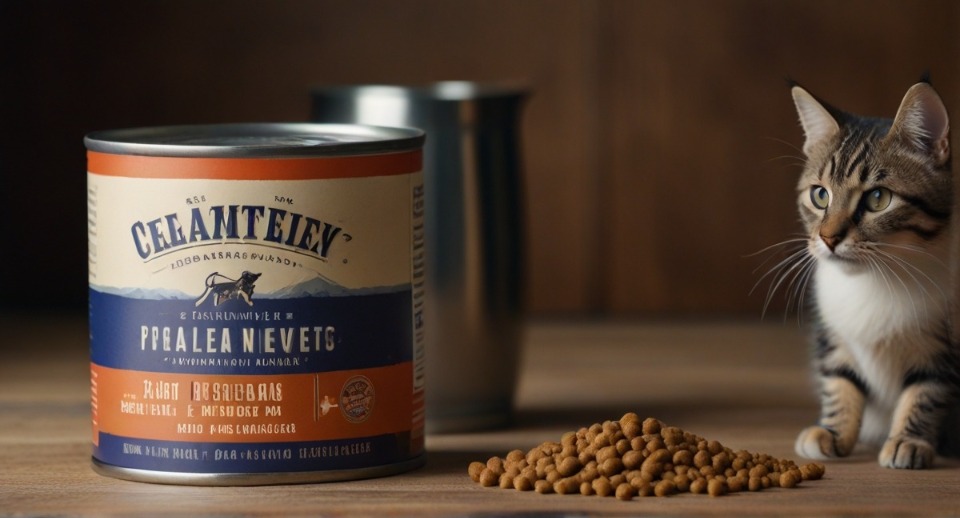
Comparison of Human-Grade Cat Food Recipes
| Recipe | Ingredients | Nutritional Value | Price |
|---|---|---|---|
| Recipe 1 | Chicken. Sweet potato. Carrots | High in protein & vitamins | $ |
| Recipe 2 | Salmon. Peas. Brown rice | Rich in omega-3 fatty acids & antioxidants | $$ |
| Recipe 3 | Turkey, Pumpkin, and Spinach | good source of fiber & antioxidants | $$ |
Choose a recipe that best suits your cat’s dietary needs & your budget. Remember To consult with your veterinarian before making any significant changes To your cat’s diet.
Ensuring a Smooth Transition
Transitioning your cat To a human-grade food diet can be done gradually over time. Start by mixing small amounts of The new food with their current diet. Increasing The proportion of The new food over several weeks. This gradual transition helps avoid digestive upset & allows your cat To adjust To The new diet more easily.
Learn more about The benefits of human-grade cat food & find additional resources To help you make informed decisions about your cat’s nutrition.
Personal Experience
As a cat owner. I have seen firsthand the benefits of feeding my cats human-grade food. Their coats are shinier. Their energy levels are higher, & they seem overall healthier. Making homemade cat food allows me to have control over the ingredients & ensure that my cats are getting the best possible nutrition. It does require some effort & planning. But the results are well worth it.
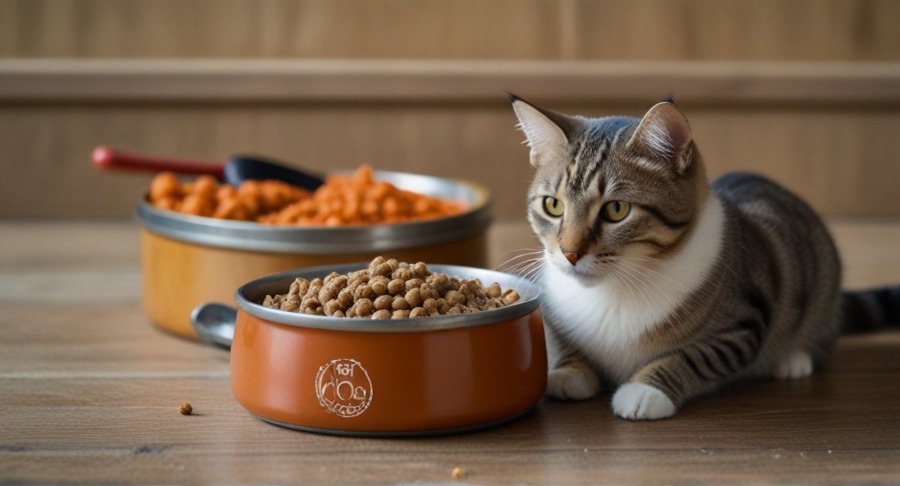
FAQs
What are human-grade cat food recipes?
Human-grade cat food recipes refer to homemade cat food recipes that are made with human-grade ingredients. These recipes use high-quality ingredients that are fit for human consumption. Ensure that your cat gets the best nutrition possible.
Why should I feed my cat human-grade food?
Feeding your cat human-grade food allows you to have better control over their nutrition. Commercial cat foods may contain fillers. Additives & low-grade ingredients that may not provide optimum nutrition. By making your own cat food using human-grade ingredients,. You can ensure that your cat receives high-quality nutrition without any harmful additives.
Are human-grade cat food recipes expensive?
While some human-grade cat food recipes may require premium ingredients that can be more expensive,. It is possible to make affordable homemade cat food using human-grade ingredients. By sourcing ingredients thoughtfully & planning your cat’s diet,. You can make nutritious & cost-effective meals that are tailored to your cat’s needs.
Can all cats eat human-grade food?
Most cats can eat human-grade food. But it is essential to consult with your veterinarian before making any dietary changes for your cat. They can assess your cat’s individual needs. Health conditions, & provide guidance on whether a humane diet is suitable for your furry friend.
How do I start making human-grade cat food?
To start making human-grade cat food. It is best to research & consult with a veterinary nutritionist to ensure you are meeting your cat’s specific nutritional requirements. You can find cat food recipes online that are tailored for homemade meals. Gather the necessary ingredients. Prepare meal prep tools & follow the recipe instructions carefully to prepare homemade cat food that is safe & nutritious for your feline companion.
Conclusion
In conclusion, preparing homemade human-grade cat food can be a healthy & satisfying option for your feline companion. By following simple recipes & guidelines, you can ensure that your cat gets proper nutrition & avoid common commercial cat food pitfalls.
Creating a conversational tone allows you to connect easily with the reader & make the information more accessible. By using simple language & avoiding complex terms & jargon, you can make the process of preparing human-grade cat food recipes easier to follow for anyone, regardless of their previous knowledge on the subject.
Remember, always consult with a veterinarian or pet nutritionist before transitioning your cat to a homemade diet. They will provide valuable advice & guidance specific to your cat’s needs & health conditions.
By following these guidelines & taking into account your cat’s unique nutritional requirements, you can ensure that your feline friend receives the best possible diet tailored to their individual needs. Experimenting with various recipes & ingredients can be a fun & rewarding experience for both you & your furry companion as you bond over delicious & nutritious meals.

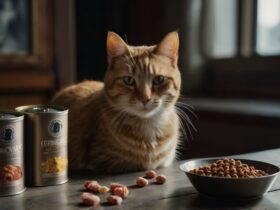
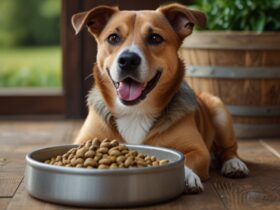


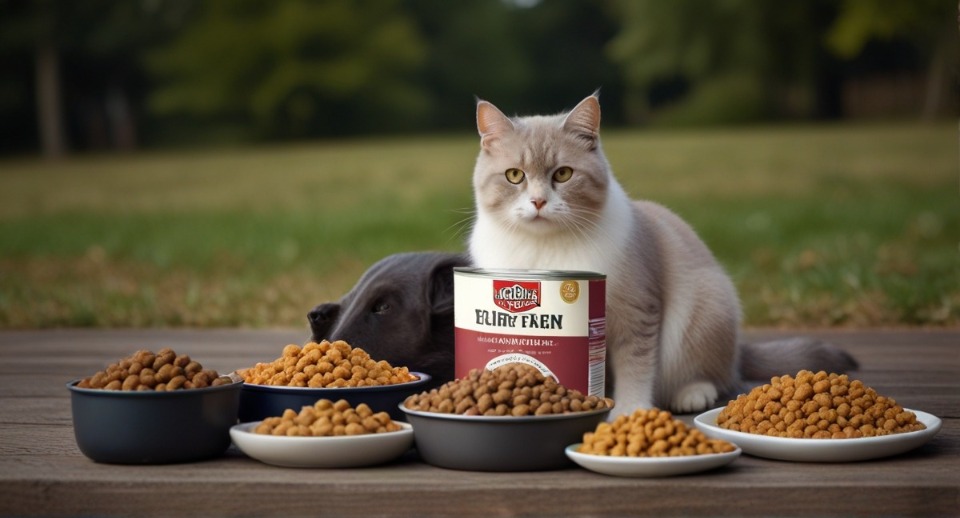
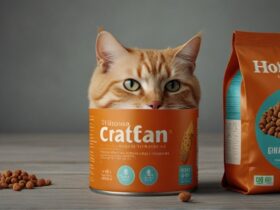
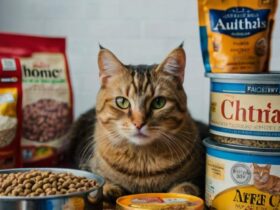
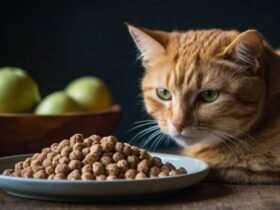
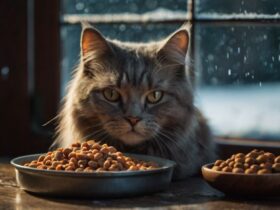
Leave a Review